Related Research Articles

Niterói is a municipality of the state of Rio de Janeiro in the southeast region of Brazil. It lies across Guanabara Bay facing the city of Rio de Janeiro and forms part of the Rio de Janeiro Metropolitan Area. It was the state capital, as marked by its golden mural crown, from 1834 to 1894 and again from 1903 to 1975. It has an estimated population of 515,317 inhabitants (2020) and an area of 129.375 km2 (49.952 sq mi), making it the fifth most populous city in the state. It has the highest Human Development Index of the state and the seventh highest among Brazil's municipalities in 2010. Individually, it is the second municipality with the highest average monthly household income per capita in Brazil and appears in 13th place among the municipalities of the country according to social indicators related to education. The city has the nicknames of Nikiti, Nicki City and the Smile City (Cidade Sorriso).

A favela is a type of slum in Brazil that has experienced historical governmental neglect. The first favela, now known as Providência in the center of Rio de Janeiro, appeared in the late 19th century, built by soldiers who had lived under the favela trees in Bahia and had nowhere to live following the Canudos War. Some of the first settlements were called bairros africanos. Over the years, many former enslaved Africans moved in. Even before the first favela came into being, poor citizens were pushed away from the city and forced to live in the far suburbs. Most modern favelas appeared in the 1970s due to rural exodus, when many people left rural areas of Brazil and moved to cities. Unable to find places to live, many people found themselves in favelas. Census data released in December 2011 by the Brazilian Institute of Geography and Statistics (IBGE) showed that in 2010, about 6 percent of the Brazilian population lived in favelas and other slums. Favelas are located in 323 of the 5,565 Brazilian municipalities.
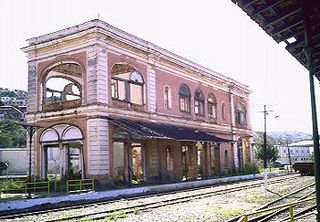
Além Paraíba is a city in the southeastern Zona da Mata region of Minas Gerais, Brazil. The name indicates its position on the far bank of the Rio Paraíba do Sul. It was known as São José d'Além Parahyba until 1923.

Jacarezinho is a Brazilian neighborhood and also a favela with more than 60,300 residents living in an area of 40 ha. The place is located in the North Zone of Rio de Janeiro city, and it borders the neighborhoods of Jacaré, Méier, Engenho Novo and Triagem. It is the third largest favela in Rio de Janeiro, only behind Rocinha and Complexo do Alemão. The favela expanded along with the city's industrialization, and it became the biggest favela in Rio de Janeiro by the mid-20th century, with a population of 23,000 in 1960. The crucial element in its growth was the industrial boom in the nearby Méier district after World War II, according to historian by Julio César Pino, author of a book about the favelas of Rio de Janeiro.
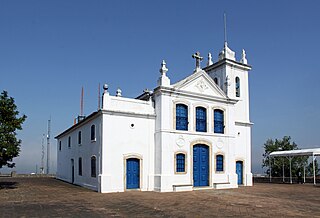
Jacarepaguá, with a land area of 29.27 square miles (75.8 km2), is a neighborhood situated in the West Zone of Rio de Janeiro, Brazil. In 2010, it had a population of 157,326. The name comes from the indigenous name of the location, "shallow pond of caymans", yakaré + upá (pond) + guá (shallow), by the time of the Portuguese colonization.

Tim Lopes was a Brazilian investigative journalist and producer for the Brazilian television network Rede Globo. In 2002, the media reported him missing while working undercover on a story in one of Rio's favelas. It was later learned that Lopes had been accosted by drug traffickers who controlled the area, was kidnapped, driven to the top of a neighboring favela in the trunk of a car, tied to a tree and subjected to a mock trial, tortured by having his hands, arms, and legs severed with a sword while still alive, and then had his body placed within tires, covered in gasoline and set on fire—a practice that traffickers have dubbed micro-ondas.

Complexo do Alemão is a group of favelas in the North Zone of Rio de Janeiro, Brazil.

Vidigal is a neighborhood and a favela in Rio de Janeiro, Brazil.

The Morro da Babilônia is a hill in the Leme neighbourhood of Rio de Janeiro, separating Copacabana beach from Botafogo. It is home to a favela known by the same name, as well as the favela Chapéu Mangueira. Morro da Babilônia is an environmentally protected area.

The Cidade de Deus is a West Zone neighborhood of the city of Rio de Janeiro. It is also known as CDD among its inhabitants.
The Military Police of Rio de Janeiro State (PMERJ) like other military polices in Brazil is a reserve and ancillary force of the Brazilian Army, and part of the System of Public Security and Brazilian Social Protection. Its members are called "state military" personnel.
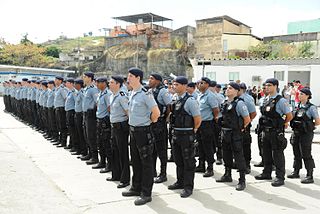
The Pacifying Police Unit, abbreviated UPP, is a law enforcement and social services program pioneered in the state of Rio de Janeiro, Brazil, which aims to reclaim territories, most commonly favelas, controlled by gangs of drug dealers. The program was created and implemented by State Public Security Secretary José Mariano Beltrame, with the backing of Rio Governor Sérgio Cabral. The stated goal of Rio's government is to install 40 UPPs by 2014. By May 2013, 231 favelas had come under the UPP umbrella. The UPP program scored initial success expelling gangs, and won broad praise. But the expensive initiative expanded too far, too fast into dozens of favelas as state finances cratered, causing a devastating backslide that enabled gangs to recover some of their lost grip.
Aldeia Campista was a neighborhood in Rio de Janeiro, Brazil, close to contemporary Vila Isabel, Tijuca, Maracanã and Andaraí.

In November 2010, there was a major security crisis in the Brazilian city of Rio de Janeiro and some of its neighboring cities. The city's criminal drug trafficking factions initiated a series of attacks in response to the government placing permanent police forces into Rio's slums.
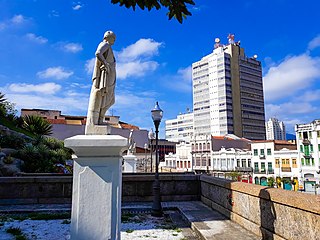
Saúde is a neighborhood of Rio de Janeiro, Brazil. Its population in 2000 was 2186. Located on the coast, just north of the historical centre in downtown Rio, west of Praça Maua and east of Gamboa, Rio de Janeiro. It contains several notable hospitals such as Hospital dos Servidores de Estado and Hospital Pro Matre; the name Saúde means "Health" in Portuguese. It is marked by many homes for the lower middle class and numerous sheds, warehouses and depots are located in the region.
Morro da Mineira("Miner's Hill") is a favela located in the Catumbi neighborhood, near downtown Rio de Janeiro, the Sambadrome, and the Praça da Apoteose. Morro da Mineira is situated on a hill and composed of simple houses inhabited by working class residents. This favela has experienced periods of extreme violence, due primarily to drug trafficking and conflict with the police force. Morro da Mineira's origins date back to the early twentieth century, when underprivileged people began occupying the hills in Rio de Janeiro in an attempt to stay closer to the city center.

Marcelo Santos de Melo Júnior is a Brazilian actor, singer-songwriter, and model.

Cantagalo–Pavão–Pavãozinho is a bairro (neighborhood), a grouping of two favelas in the South Zone of Rio de Janeiro, Brazil, located between the bairros of Ipanema and Copacabana. As of 2010, it has circa 9,500 inhabitants.
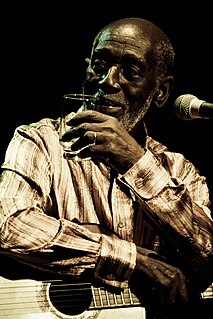
Nelson Sargento OMC was a Brazilian composer, singer, Brazilian popular music researcher, visual artist, actor, and writer.
References
| Wikimedia Commons has media related to Favelas—Slums in Brazil . |
- (in Portuguese) Secretaria Municipal do Habitat: List of Rio de Janeiro Favelas